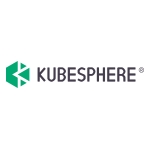Edge computing, metering and billing, streamlined DevOps and more highlight the latest release
HONG KONG–(BUSINESS WIRE)–KubeSphere Community, announced the general availability of KubeSphere v3.1.0. KubeSphere, as an app-centric distributed operating system running on top of Kubernetes, has further expanded its portfolio to deliver more robust experiences for users across the globe, enabling DevOps teams to run Kubernetes workloads where and when they want with ease and security.
�KubeSphere has emerged as one of the most popular Kubernetes platforms,� said Ray Zhou, Head of the KubeSphere project. �The release of KubeSphere 3.1 marks an important milestone as we further empower enterprises to gain first-mover advantages especially in edge computing.�
Taking Kubernetes From Hybrid Multi-Cloud to Edge
KubeSphere v3.1.0 provides an enabling environment for users as they can deploy production workloads not just across clouds but also at the edge. Besides, the new Metering and Billing function helps IT administrators better understand infrastructure operating costs. Existing features of multi-cluster management, multi-tenant management, observability, DevOps, application lifecycle management, and microservices governance have also been enhanced to ensure better user experiences across clusters and clouds.
Major updates include:
- Metering and Billing
KubeSphere v3.1.0 is equipped with a brand-new feature of metering and billing. It records resource usage in clusters and workspaces while users can dive deep into nodes, projects, workloads, and Pods.
- Edge Node Management
KubeSphere works perfectly with KubeEdge as it boasts a wizard user interface that allows users to enable KubeEdge and add edge nodes without getting stuck in complex configurations. After KubeEdge is enabled, users can add edge nodes to Kubernetes cluster by simply running a single command on them. Furthermore, users can deploy workloads on their edge devices and view logging and monitoring data of them on the console directly.
- Lightweight Kubernetes Multi-Cloud and Multi-Cluster Management
Multi-cloud and multi-cluster management is one of the most significant features for KubeSphere. Most importantly, it returns great benefits for every enterprise managing heterogeneous clusters across clouds in a lightweight way.
- Unified Kubernetes Monitoring in One Place
Observability has remained a central focus for enterprises� adoption of Kubernetes strategy. KubeSphere allows users to understand and improve the health, performance, and availability of their resources no matter where they are deployed. In the new version, KubeSphere uses Thanos Ruler and the build-in rules of Prometheus. Also, different notification methods can be configured on the KubeSphere console directly, including email, Slack, WeCom and Webhook.
- Easier Kubernetes Installation
Since the inception of KubeKey as an open-source project, it has seen increasing popularity among not just KubeSphere users but Kubernetes users, who also use KubeKey to install cloud-native tools. Together with the release of KubeSphere v3.1.0, KubeKey has witnessed a major version upgrade (v1.1.0) with more support for different environments.
With the latest version of KubeKey, users can install Kubernetes v1.17-v1.20 on both AMD 64 and ARM 64, and even K3s, a lightweight fully compliant Kubernetes distribution. More network plugins are supported now, such as Cilium and Kube-OVN. Users can also install different container runtimes (containerd, CRI-O and iSula) using KubeKey as a response to Dockershim deprecation in the future.
- Enhanced Security with Authentication and Multi-Tenancy
A unified and comprehensive account authorization and authentication system represents an important building block in a multi-tenant Kubernetes system for logic isolation. In KubeSphere v3.1.0, users can use workspaces to manage and group projects, also can define departments in workspace. A department is where users manage a group of users with the same role, which greatly streamlines the permission assignment process. Also, users can define workspace quotas to manage resource usage at the workspace level.
In terms of authentication, the new version has simplified IdentityProvider configurations to provide better user experiences as users integrate third-party authentication. In addition to LDAP, KubeSphere has added support for major authentication protocols such as Central Authentication Service (CAS), OpenID Connect (OIDC) and OAuth2. At the same time, users can integrate their account system as plugins into KubeSphere.
Commitment to Open-Source and Community
KubeSphere is making great strides on its international journey with over 100,000 downloads across 90 countries and regions to date. The KubeSphere console currently supports four official languages – English, Simplified Chinese, Traditional Chinese and Spanish.
�When you take a step back and reflect on how far KubeSphere has come, it is not surprising to find that it has become one of the most widely used container platforms not just in our country, but also around the world,� Ray added. �Our contributors from all corners of the world have shown us what open source is all about. And this is exactly what has been driving us to push the limits of what�s possible with Kubernetes.�
KubeSphere v3.1.0 remains committed to open source with an ever-expanding ecosystem including Kubernetes installation tool( KubeKey) and cluster scanner tool(KubeEye), . Users can find the code and documentation in KubeSphere GitHub repositories.
About KubeSphere
KubeSphere is an open-source container platform based on Kubernetes. It provides full-stack IT automated operation and streamlined DevOps workflows. KubeSphere offers wizard web UI and enterprise-grade features for operation and maintenance, including multi-cloud and multi-cluster management, DevOps (CI/CD), application lifecycle management, service mesh, multi-tenant, observability, storage and network, and GPU support.
For more information, visit website https://kubesphere.io , GitHub https://github.com/kubesphere/kubesphere and follow @KubeSphere on Twitter.
Contacts
Media
Feynman Zhou
[email protected]
0086-17671624050
Lindsay Liu
[email protected]
0086-18810926700







